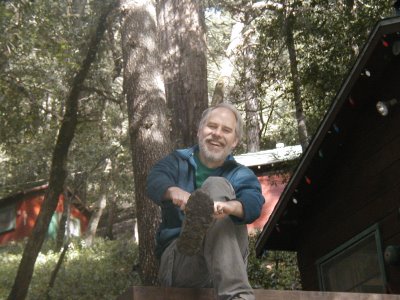We heard it was snowing in the mountains, but we weren't there. Instead we took the trail from Temescal Canyon to Will Rogers Park and I must say it was a beautiful day to appreciate a view all the way to Catalina. And for my part, I wasn't sorry to be missing the freezing cold.
We were early, the trail was empty and the park was quiet. We startled one doe out for a stroll and we stood frozen in the trail as she watched us.
And the end of a brisk five miles, we visited with the most enormous horse I've ever seen. Sharon says maybe it was a Clydesdale. Of course there was no camera but take my word for it, the horse was huge and he was king of the corral. We watched a bit while he bullied his mates for the tastiest bits of breakfast and none of them put up a fight. The sign said no touching but I couldn't resist and so we broke the law as well. What is the punishment for touching the horse, I wonder?

